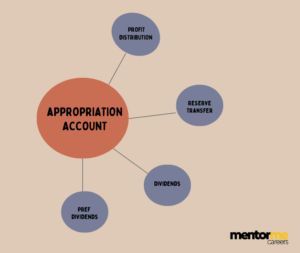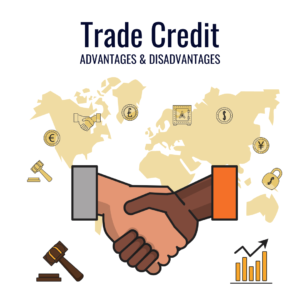Last updated on July 20th, 2024 at 01:45 pm
So there is enough literature out there which talks about target costing definition and the features of target costing. Hence in this article, you should expect less on what but the problems of target costing.
Define Target Costing
Target costing is a method of costing and a management technique wherein the prices are determined depending upon the market conditions by considering several factors such as homogeneous products, level of competition, switching costs for the end customer, etc. The management feels the need to control the costs when these factors come into the picture.
Target Costing formula = Selling Price – Profit Margin
Target costing meaning
The competition in construction, Fast-moving consumer goods (FMCG), healthcare, and energy is so intense that the prices are determined by the demand and supply in the market. The producers cannot control the selling prices of the products. The main focus of the management is influencing every component of product, service, or operational costs. The primary objective of target costing is to make sure that the management uses proactive cost planning, cost management, and cost reduction practices.
Key features of Target Costing
- The market conditions determine the price of the products.
- The target selling price includes the minimum required profit margin.
- It is a management strategy to focus on cost reduction and effective cost management.
- Built-in product designs, specifications and customer expectations.
- Cost reduction
Benefits of Target Costing
- Improves management’s commitment and product innovation to gain competitive advantages
- Cost is based on customer expectations. This makes the customer feel more valuable.
- Improvement is the operation of the company. This helps create economies of scale.
- The approach to design and manufacturing becomes market-driven
- New opportunities are converted into real savings to achieve the best value for money.
Target Costing Example
Britannia is a big FMCG multinational company that operates in a very competitive market. It sells packaged food to their customers. Britannia can charge Rs. 50 per unit. If the company’s intended profit margin is 30% on the selling price, calculate the target cost price per unit.
Solution:
Target profit margin = 30% of Rs. 50 = Rs. 15 per unit
Target Cost = Selling price – Profit margin = Rs. 50 – Rs. 15
Target cost = Rs. 35
5 Major Pitfalls with Target Costing
So let me summarise the issues with this method, more from a practical use case scenario;
- Inadequate Analysis
The basic and strong assumption of this method is that the data assumed in the analysis is accurate. So if the market research is done realistically then the target costs will not yield practical results. There is good chance that the end product is either too expensive or too cheap to meet the desired profit margins
- Cost Reduction Challenges
Cost reductions are rarely straightforward and are way more complex and intertwined with other aspects of the product. Hence, cost cutting decisions should be taken after analysis else it will lead to compromised quality.
- Overemphasis on Cost Reduction
When the business focussed too much on reducing the cost then it looses its sight on the product and quality.
- Shallow Understanding of Business Capabilities
Without understand the complexity of the needs of the business, and straightforward jumping into target costing can harm the business
- Resistance to Change
When a cost cutting plan is implemented, it is necessary to for the entire organisation to sync with it. If there are hurdles in acceptance then it will lead to bad results.
Stages of Target Costing
Let me briefly point out the usual steps in target costing, followed by companies for arriving at target costing. Although, certain steps might differ based on the size and scale of the company.
- Target Market Prise setting
- Establishing the desired profit marging
- Calculating the current and future products cost
- Attaining the target price
- Pursuing cost reduction methods
Nature Of Target Costing Using an example
- Let’s say you want to start an electronic smart phone company and begin your market research. You analyse competition, price and features. While you conclude that the optimal selling price should be $500. This is nothing but the first target costing steps.
- Now you aim for let’s assume a 20% profit margin for the new phone. Hence you calculate in the following manner
Target cost= $500-(20%*$500)=$500-$100=$400. Hence essentially the budget to develop this phone per unit is going to be $400.
- Now you decide to optimise this process further in the following manner
Your design team tries to identify the ways in which component cost can be reduced by using alternative materials.
- Now once the basic product level costing methods are done, then you pursue methods to improve activity base costing inefficiencies.
Long-Term Strategy and Design and Development Considerations
When implementing target costing, it is crucial to consider the long-term strategy and the design and development phases of the product. Effective target costing involves immediate cost reductions and a comprehensive approach to the entire product lifecycle. This includes optimizing design and development processes to meet competitive market prices while ensuring quality and customer satisfaction. By focusing on these areas, businesses can achieve sustainable cost management and maintain a strong market position.
International Case studies of Target Costing Failures
As I said in the beginning of this blog that I am not here to talk only about the methods but challenges of this method. So let me give you some international cases where this had experienced its own challenges.
Nissan In Mid 1990’s
This automobile company faced severe difficulties in with their product costing. Due to the cost reduction process and negation with their suppliers they failed at achieving the target cost.
Boeing 787 Dreamliner in 2000’s
This is a totally unique situation where Boeing, in pursuing of gaining market share had set aggressive target costing prices. However, due to the materials being used were new. Along with the technology used which was expensive. Coupled with supply chain issues, led to server losses and delay in delivery.
Toyota During 2000’S
One of the known experts in target costing process, the anticipated selling price went for a toss when cost of the product increased. This was due to sudden changes in the price points of raw materials. This finally led Toyota to pursue negotiations to achieve the selling price desired profit.
Texas Instruments in 1990’s
The company had implemented a target costing system for its semiconductor products. However a server and fast change in product life cycles due to technological changes. Which led to the failure of target costing and competitiveness.
Conclusion
Just like any other cost accounting concepts and systems this method has its own challenges. And while using these methods you should be careful with your own flexibility in thinking. Because as I said there is a big bias with the assumptions entered at the start of the process.




